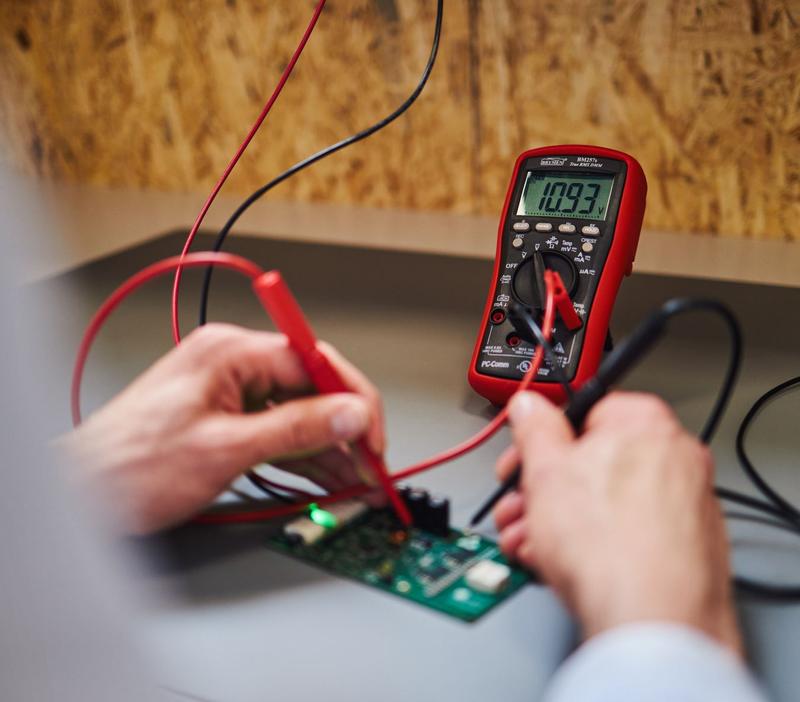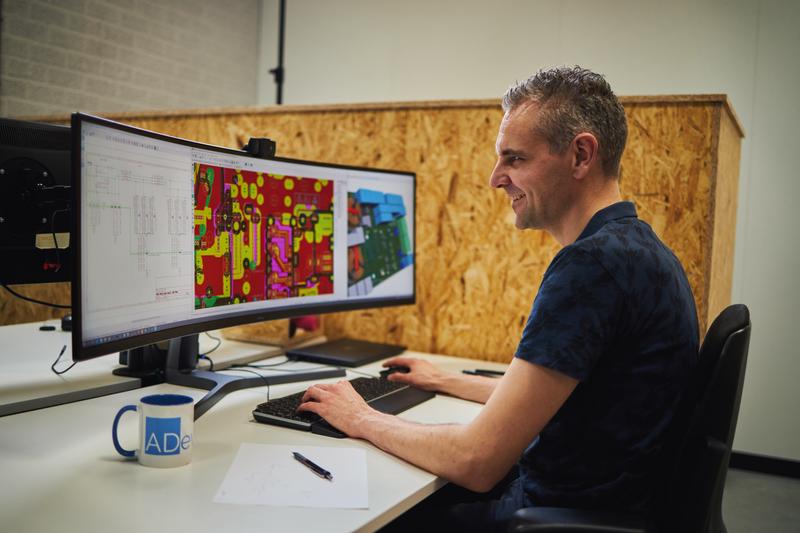Analogue electronics are constant and continuous, offering the accuracy and speed that digital electronics cannot provide. Everything in the real world is analogue. In fact, all electronic circuits are analogue, even if they are classified as digital. Expertise in analogue electronics is therefore vital in electronic development.
Analogue electronics
What are analogue electronics?

What do analogue electronics do?
There are numerous parameters we want to measure, control and adjust. Atmospheric humidity and pressure, speed or position: a wide range of applications require accurate measurements. These physical processes work along a continuous spectrum and have no discrete units, just like digital signals. Therefore, analogue electronics are indispensable whenever digital electronics interact with the real world. They are crucial to applications where high accuracy or speed is of the essence.


Analogue electronics applications and tech (technical information):
Applications of analogue electronics
- Speedometers
- Position sensors (laser, radar)
- Microphones
- Thermometers
- Amplifiers
- RF devices
- Heart rate monitors
- Pressure gauges
- Fast control loops
- Signal processing
- Signal conditioning
- Interfaces
- Product monitoring
- Sensors
Interfaces
- Input voltage (e.g. 0…10 V)
- Output voltage (e.g. 0…10 V)
- Input current (e.g. 4…20 mA)
- Output current (e.g. 4…20 mA)
- Senor input
- Actuator drivers
Type circuits
- Filters
- Amplifiers
- Preamplifiers
- Oscillators
- Power supply
Supporting technologies
- Digital electronics
- Embedded software
- Power electronics
- Measuring and control technology

Analogue or digital electronics?
The choice between analogue and digital electronics is pretty straightforward: digital whenever possible, analogue whenever necessary. Digital electronics are economical, reliable and often simple to implement thanks to state-of-the-art ICs and embedded software. However, analogue electronics still play an important role in electronic development. They are essential in applications in which digital electronics cannot provide the required level of speed or accuracy or in which a conversion to or from the digital domain is needed.
Analogue electronics can be developed for low-power, low-noise and/or low-drift applications, in which the output signal is linear with regard to the input signal.
Low sensitivity to interference and EMC immunity
Electronics can be susceptible to interference. Several factors, including electromagnetic fields, can affect functionality and reliability.
It is therefore important to make sure that all electronic products meet electromagnetic compatibility criteria. They must not be a source of interference and must be able to operate properly in the intended environment. I keep this in mind from the first step of the design process.
In analogue electronics, the main focus is often on EMC immunity. I develop circuits with high signal-to-noise ratios and design PCBs (printed circuit boards) with the bare minimum of coupling to sensitive points. I see this as "good engineering practice", and it yields reliable, high-quality products.
Analogue electronics design: robust, reliable and efficient
Thanks to my many years of experience, I can determine whether analogue electronics will be necessary from the concept phase. I also take into account the required specifications, manufacturability and your budget. To create a first-rate end product, there are several key aspects to my working method.


Analogue electronics design
Understood. Now what?
Want to find out more? Find out more:
You can also get in touch to schedule a non-binding appointment.


